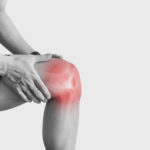March 7, 2022
Why Does the Top of My Foot Hurt?
If you’ve been dealing with growing discomfort in the top of one or both feet over several days or weeks, you’ve likely wondered, “why does the top of my foot hurt?” There are several potential causes behind pain in the top of the foot.
Each of your feet is made up of 26 bones, 30 joints, thousands of nerve endings, and more than 100 tendons, ligaments, and muscles. All of these parts work together to support your weight and provide you with mobility and balance. When the bones, joints, or soft tissues in the top of your foot suffer any type of injury, you may experience discomfort throughout the area.
While there are many possible culprits behind the top of foot discomfort, tendonitis in the top of the foot is the most common. This condition is known as extensor tendonitis, and you can learn more about what it is, what causes it, how it’s diagnosed, and how to treat it below.
What Is Extensor Tendonitis?
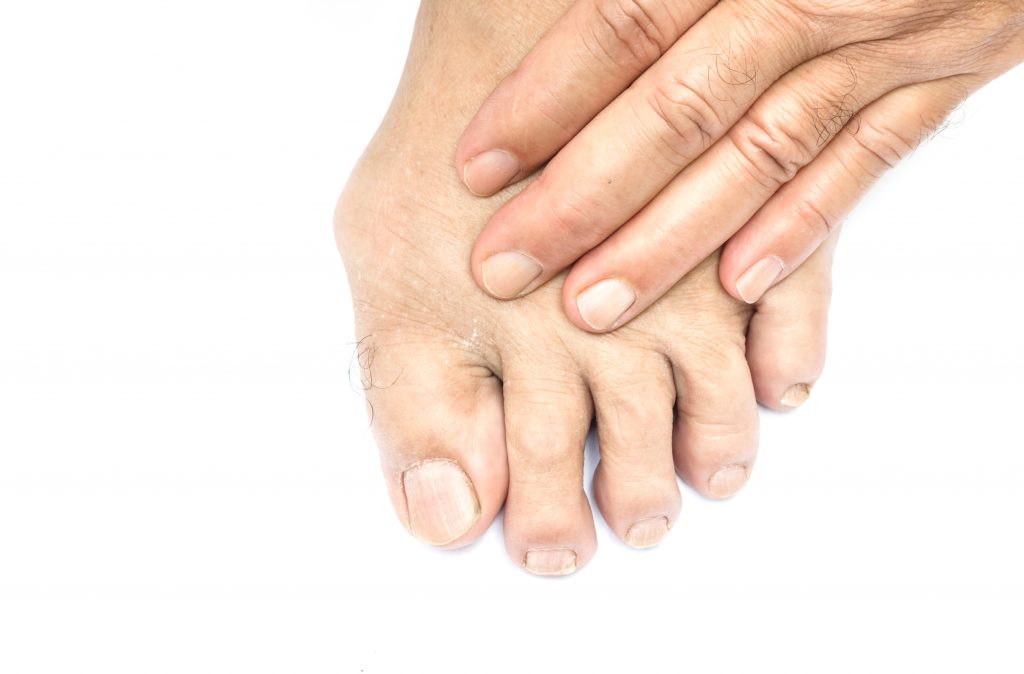 Extensor tendonitis is a condition that causes inflammation of the extensor tendons. These tendons exist in both your hands and feet and serve an important purpose.
Extensor tendonitis is a condition that causes inflammation of the extensor tendons. These tendons exist in both your hands and feet and serve an important purpose.
In your hands, these tendons allow you to move your wrists, fingers, and thumb. In your feet, extensor tendons allow you to flex your foot upward and downward and move your toes. Because these tendons see a lot of use and have little protective padding, they’re vulnerable to injury in both locations.
What Causes Extensor Tendonitis in the Top of the Foot?
Extensor tendonitis of the foot has two common causes. Some people develop the condition from wearing shoes that are too tight. When the tendons in the top of the foot repeatedly rub against the inside of a tight shoe, they can become irritated and inflamed, which causes pain.
Top of foot tendonitis can also be caused by overuse. If you’re a runner or perform activities that require you to be on your feet for a long time, the tendons in the top of your feet can become irritated. Running uphill and on unstable surfaces can increase your risk of developing extensor tendonitis. Because your foot tendons work especially hard to stabilize you during running activities, they can become inflamed over time.
Extensor Tendonitis Symptoms
The most common symptom of extensor tendonitis of the foot is persistent pain in the top of one or both feet. Typically, this discomfort develops gradually over time, and once present, it can occur even when you’re not actively using your feet.
Usually, the pain gets worse when you stand, walk, or run and is most noticeable at the midpoint of the foot. Although an acute injury or a single event can trigger inflammation in the top of the foot, it’s uncommon for extensor tendonitis to develop suddenly.
Aside from prolonged discomfort, other symptoms of extensor tendonitis of the foot include: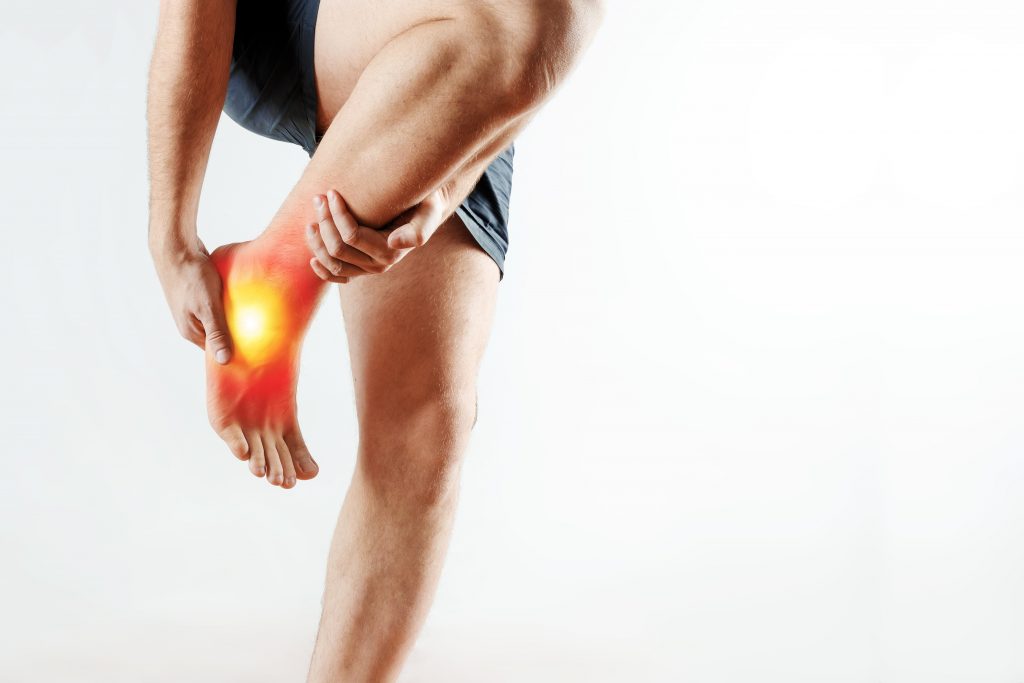
- Pain when flexing the foot upward or downward
- Pain when curling the toes
- Decreased range of motion in the foot
- Weakness of the foot
- Joint stiffness in the area around the affected tendon
- Tingling or numbness around the affected tendon
- A crunchy sound or feeling when using the affected tendon
Extensor tendonitis can also cause swelling in the top of the foot, which may produce warmth or redness. Some people also develop a visible bump somewhere along the inflamed tendon.
How Is Extensor Tendonitis Diagnosed?
Extensor tendonitis is a fairly common condition, so your primary care doctor may be able to diagnose the pain you have. Depending on the severity of the discomfort and any other symptoms present, seeing a foot and ankle specialist may be necessary.
During your appointment, your doctor will perform a physical exam and talk with you about your symptoms, your lifestyle, and ways that you may have injured your foot. Your physician may also perform a foot X-ray to determine whether a fracture may be causing the pain.
If you have severe discomfort, you may need an MRI or ultrasound of your foot. These imaging tools allow your doctor to perform a more in-depth exam of the soft tissues in your foot and make sure there are no other injuries or conditions present.
How to Treat Extensor Tendonitis of the Foot?
Extensor tendonitis foot treatment typically involves resting the sore, inflamed tendons, so they can heal. But in serious cases, medical treatment may be necessary.
Extensor Tendonitis Treatment at Home
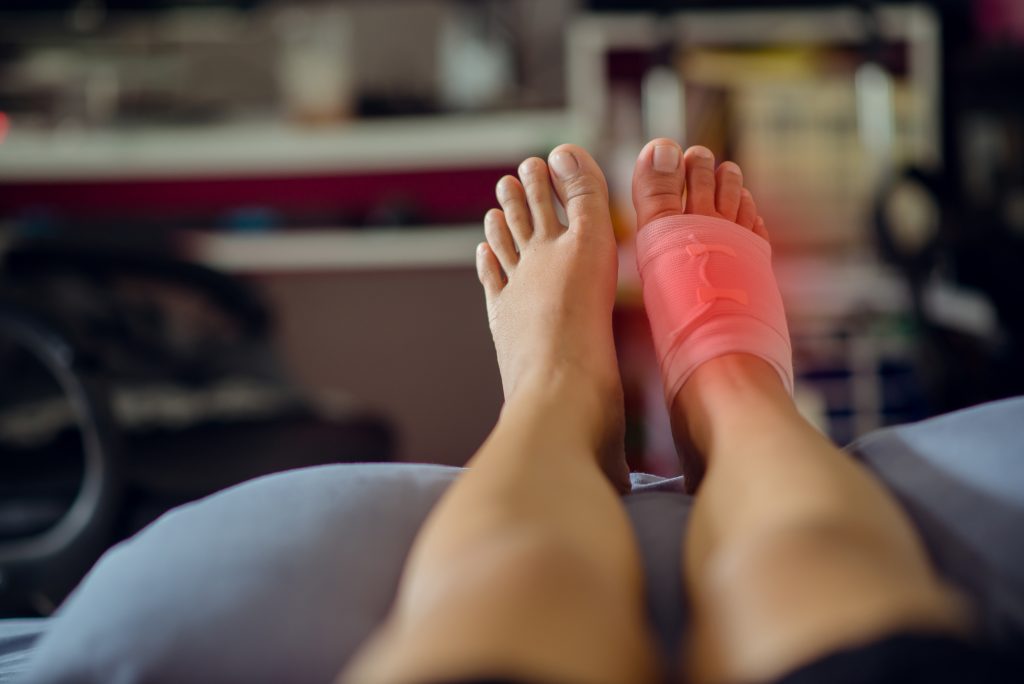 If the tendons in the top of your feet are hurting, you can try treating them at home by using your feet as little as possible for two to three days. You can also elevate your feet and apply ice to the affected area for no longer than 20 minutes. Do this every two to three hours to help reduce inflammation and soothe the discomfort.
If the tendons in the top of your feet are hurting, you can try treating them at home by using your feet as little as possible for two to three days. You can also elevate your feet and apply ice to the affected area for no longer than 20 minutes. Do this every two to three hours to help reduce inflammation and soothe the discomfort.
Loosening your shoelaces or adding a small amount of padding to the underside of the tongue of your shoe can also help. If your shoes feel tight, it may be in your best interest to wear footwear that isn’t so restrictive. Wearing shoes with a little more wiggle room can help reduce your risk of recurring extensor tendon inflammation.
Seeing a Doctor for Extensor Tendonitis Treatment
If you rest your feet for a few days and the pain doesn’t go away, you should contact your doctor. Your provider may recommend that you take over-the-counter or prescription nonsteroidal anti-inflammatory drugs (NSAIDs) to help relieve the pain.
Depending on the underlying cause and severity of the pain, your physician may also recommend:
- Physical therapy, which will help strengthen the affected foot.
- Corticosteroid injections, which will help reduce inflammation in the affected tendon.
- Alternative therapies that may help the tendon heal, such as platelet-rich plasma treatment or dry needling.
In severe cases of extensor tendonitis, the affected tendon can begin to pull away from the bone it’s attached to. In such cases, foot surgery may be necessary.
Tips for Preventing Extensor Tendonitis
If you frequently find yourself wondering, “why do the tops of my feet hurt?” it’s a good idea to take measures to prevent extensor tendonitis from developing or recurring. To help keep your tendons healthy, you’ll want to: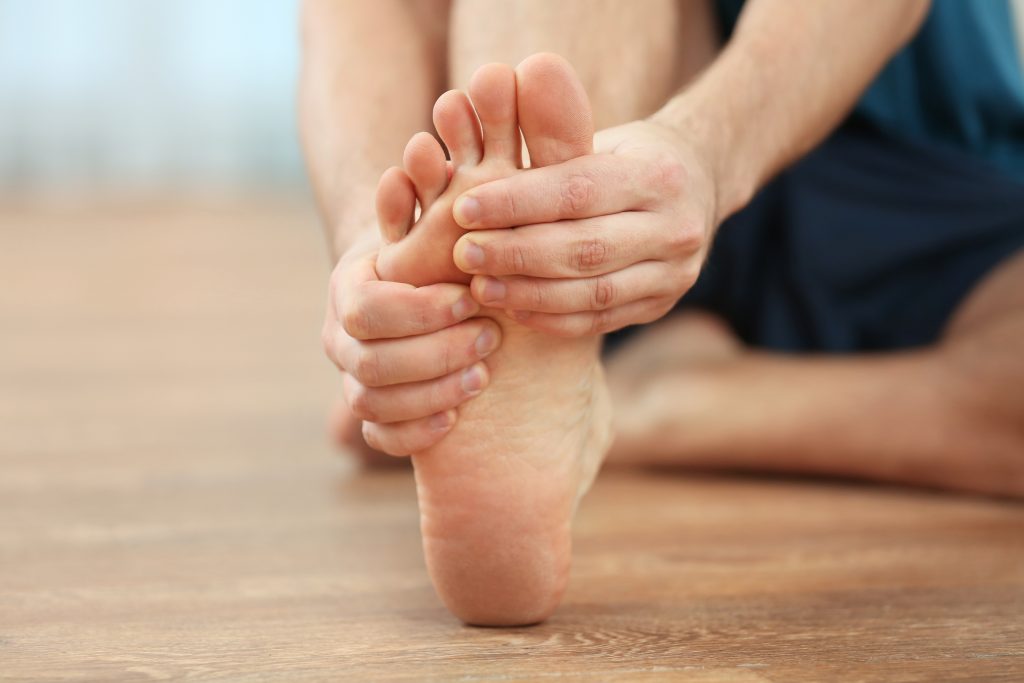
- Listen to your body and stop performing movements that cause pain in the top of your feet.
- Perform a warm-up before every exercise session and a cool-down afterward.
- Learn and practice proper form for all exercises that you do.
- If you’re new to a specific exercise or exercise in general, start slow and allow your body to acclimate gradually.
- Pay close attention to how the top of your feet feel during exercise, during long periods of physical activity, and after you wear a new pair of shoes.
- Only wear shoes that fit your feet properly.
- Exercise regularly to strengthen the tendons in your feet.
Contact Healthcare Associates for an Extensor Tendonitis Diagnosis
If you’ve been having persistent pain on the top of one or both of your feet, don’t hesitate to contact Healthcare Associates of Texas to schedule an evaluation. Our team of board-certified medical professionals can work with you to find the root cause of your foot pain and develop a treatment plan that gives you relief. You can find our nearest location and call us directly, or request an appointment online.
DISCLAIMER
The information featured in this site is general in nature. The site provides health information designed to complement your personal health management. It does not provide medical advice or health services and is not meant to replace professional advice or imply coverage of specific clinical services or products. The inclusion of links to other web sites does not imply any endorsement of the material on such websites.



